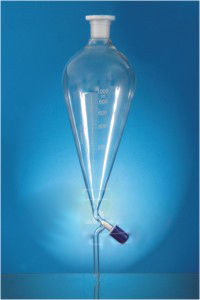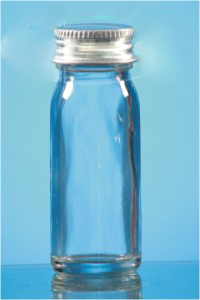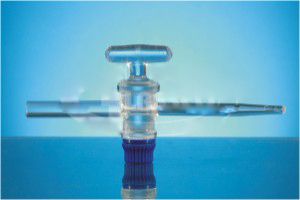Separating Funnels, Graduated
Separating Funnels, Graduated Specification
- Control Type
- Manual
- Features
- Stopcock for controlled liquid release; graduation marks for volume; pear/tear drop or cylindrical shape
- Shape
- Pear/Tear Drop or Cylindrical
- Power Supply
- Not required
- Temperature Resistance
- Up to 250C
- Glass Type
- Borosilicate
- Display Type
- Graduated markings
- Accuracy
- Graduations accurate to within 5%
- Type
- Graduated Separating Funnel
- Dimension (L*W*H)
- Varies with capacity; typical diameter and height corresponds to volume (e.g., 100mL: approx. 50mm x 150mm)
- Equipment Type
- Laboratory Glassware
- Equipment Materials
- Glass
- Power
- Not required
- Material
- Borosilicate Glass
- Capacity (Ltr)
- Available in 50ml, 100ml, 250ml, 500ml, 1000ml, 2000ml, 3000ml, 5000ml
About Separating Funnels, Graduated
| Separating Funnels, Graduated | ||||||||||||||||||||||||||||||||||||
|
Exceptional Chemical Resistance
Constructed from premium borosilicate glass or PTFE, these separating funnels are highly resistant to a broad range of chemicals, including acids, alkalis, and organic solvents. This durability ensures long-term reliability in demanding laboratory processes without compromising the integrity of contents.
Precision and Versatility
Marked with clear, accurate graduations at regular intervals, these funnels offer precise volume measurements. The inclusion of a manual PTFE or glass stopcock allows controlled, drip-free dispensing, while multiple shape and capacity options suit a variety of laboratory protocols.
Compliant and Autoclavable Design
Meeting stringent ISO/DIN standards, these separating funnels are autoclavable for efficient sterilization and safe repeated use. Their indefinite shelf life, when handled correctly, guarantees cost-effective, dependable operation in laboratory environments.
FAQs of Separating Funnels, Graduated:
Q: How should a graduated separating funnel be used in the laboratory?
A: To use a separating funnel, first ensure the stopcock is securely closed before adding your liquid mixture. Attach the funnel using a B19 or B24-standard holder, shake if mixing is required, allow phase separation, then gently open the stopcock to release each layer precisely by monitoring volume with the graduation marks.Q: What are the main benefits of selecting a borosilicate glass or PTFE separating funnel?
A: Borosilicate glass and PTFE offer exceptional chemical resistance, withstanding exposure to acids, alkalis, and organic solvents. They also endure high temperatures up to 250C, ensuring longevity, repeated sterilization, and compatibility with a wide range of laboratory applications.Q: When is it necessary to autoclave a separating funnel, and is it safe to do so?
A: Autoclaving is recommended prior to sterile procedures or after contact with hazardous substances. These funnels are designed to be safely autoclaved, provided both glass body and PTFE stopcock are present, preserving their accuracy and transparency after multiple cycles when handled properly.Q: What is the accuracy of the graduation markings on these separating funnels?
A: The graduation marks are accurate within 5%, ensuring volume measurements are reliable for laboratory tasks. Clearly marked at regular intervals corresponding to each funnels capacity, they make it easy to dispense and monitor liquids accurately during experiments.Q: Where are these graduated separating funnels typically used, and who supplies them in India?
A: They are widely used in research laboratories, educational institutes, and industrial settings for tasks like liquid-liquid extraction, phase separation, and purification. Multiple manufacturers, suppliers, and traders across India offer these funnels in standard and custom capacities.Q: What maintenance is required to maximize the shelf life of a separating funnel?
A: After use, clean the funnel thoroughly with appropriate solvents, rinse with distilled water, and allow to dry. Store in a dry, secure place away from sudden temperature changes or impacts. With proper handling, the shelf life of these funnels is indefinite.Q: How does the shape or outlet design benefit liquid separation and pouring?
A: The pear or cylindrical shapes aid in efficient phase separation, while the tapered outlet ensures precise control and minimizes spillage during liquid transfer. The manual stopcock further enhances control, making these funnels ideal for complex separation procedures.

Price:
- 50
- 100
- 200
- 250
- 500
- 1000+
More Products in LABORATORY GLASSWARE Category
Soxhlet Extraction Apparatus
Material : Borosilicate glass
Glass Type : High quality borosilicate glass
Equipment Type : Laboratory glassware
Control Type : Manual or digital thermostat
Application : Laboratory extraction of soluble compounds
Temperature Resistance : Up to 300C
Burette Lengths without Stopcocks
Material : High Quality Glass
Glass Type : Borosilicate
Equipment Type : Laboratory Glassware
Control Type : Manual
Application : Laboratory liquid measurement and titration
Temperature Resistance : Up to 250C
Mac-Cartney Bottles
Material : Borosilicate Glass
Glass Type : Clear Borosilicate Glass
Equipment Type : Laboratory Bottle
Control Type : Manual
Application : Microbiology, Laboratory Sampling, Sterility Testing
Temperature Resistance : Up to 121C (Autoclavable)
Glass key stopcock for Burrete
Material : Glass
Glass Type : Borosilicate glass
Equipment Type : Laboratory glassware
Control Type : Manual glass key rotation
Application : Used for precise control of liquid flow in burettes
Temperature Resistance : Up to 250C
GST : 06ACOPS0805K1ZD
|
 |
SINGHLA SCIENTIFIC INDUSTRIES
All Rights Reserved.(Terms of Use) Developed and Managed by Infocom Network Private Limited. |


 Send Inquiry
Send Inquiry





